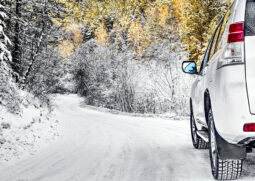Spring is the most important time to care for the lawn after the winter months. It is also the perfect time for many sprouting buds and greener grass. Knowing how to fertilize the lawn and plants correctly during spring can ensure the former remains healthy all year, minimizing the risk posed by weeds and insects. Since not all lawns are the same, there is no one-size-fits-all approach to lawn care.
Seaweed
Seaweed is a rich source of nutrients such as phosphorus, nitrogen, potassium, magnesium, and calcium. It works as a soil conditioner and aerator, helping improve drainage when used with compost. Due to its pH properties, seaweed is ideal for seaside gardens with acidic soil.
Mulch
Old grass clippings and leaves from one’s yards can be used as mulch to fertilize the lawn. This no-investment option is an excellent way to put the nutrients back into the soil and improve nourishment by up to 25%.
Cat and dog food
Cat and dog food contains vitamins and minerals, making it another great fertilizer option. The bacteria in the soil have to break down the nutrients to be absorbed by plants. However, this process can be stinky, which may attract animals and critters.
Coffee grounds
Don’t throw away the grounds after brewing a fresh pot of coffee! This common household refuse adds a lot of organic matter to the soil, enriching it with nutrients. Mix it in the top layer of soil or simply sprinkle it on top of the soil.
Manure
Those who own livestock can also make use of manure for their lawns. This sustainable option helps condition the soil, recycle nutrients to the crops, protect water quality, and improve soil quality, making it a popular choice for many.
Matches
This may sound odd, but matchsticks also contain many nutrients that could be beneficial for the soil, such as sulfur, potassium chlorate, phosphorus, magnesium, and ferric oxide. While these can’t be used for larger lawns, they are a great fertilizing solution for plants in smaller pots. To use, simply place 10-15 fresh matchsticks in each pot and allow them to break down over time.
Eggshells
Eggshells are rich in calcium carbonate, an important nutrient for plant growth. Instead of tossing them away, crush them into a powder and sprinkle them in the soil. Not only do they nourish the soil, but their smell will also keep unwanted insects at bay.
Traditional fertilizers
The more traditional option that many people opt for is chemical fertilization. These are available in several varieties at hardware stores, home improvement shops, and other garden stores. Depending on one’s needs, buying fertilizers for specific times of the year, such as midsummer, early season, or late-season turf-builder mixes, is possible. Additionally, one can also look for fertilizers with specific weed or insect-killing properties, to maintain their lawn’s health.
It is also crucial to know the right amount of chemical fertilizer to use based on one’s pick. Some experts recommend starting low and slow, with half the amount and rate the manufacturer recommends. Depending on the results, this can be amplified in time.
Picking the best NPK fertilizer for Spring 2024
With a basic idea of what each mineral and fertilizer does for one’s lawn, it’s time to identify which fertilizer is best for the spring.
For spring, the best fertilizers are those with a higher nitrogen concentration. Even with these, however, one must know the right ratios for their lawns. The most popular options here are:
- 15-0-6
- 20-0-5
- 30-0-3
- 35-0-5
Homeowners who have gardens would do well with fertilizer numbers like 12-55-6, 16-20-0, or the standard 20-20-20 during the spring. A slower and more controlled use may be advisable for green areas with many trees and shrubs, with fertilizer numbers like 10-10-10 or 8-3-9.
These numbers indicate the Nitrogen, Phosphorus, and Potassium content of the fertilizer. The application quantities for each vary depending on the grass type and the current soil composition. These numbers are usually found on the front of the bag for both liquid and granular fertilizers.
Best time to apply fertilizers
Those using organic fertilizers may benefit from planning and starting their fertilizer application process in the early fall. This will help build stronger root systems. During the summer and spring months, skip the fertilizer application process and opt for mulched grass clippings to keep the lawn well-fed.
With chemical or traditional fertilizers, more frequent application may be necessary – about two to three times a year. Spring, midsummer, and early fall are the best times to do this. There are three things to consider here:
- Temperature – The ideal temperature for fertilization for cool grasses is 60-70 degrees, and for warm grasses, it is around 80-90 degrees.
- Growth of lawn – Wait until the grass is actively growing to fertilize the lawn.
- Weather – The best time to apply fertilizer is when the lawn is dry but about to be watered. Aim for the day before a rainstorm for best results.
For more specific information about fertilizers for each type of grass, soil type, and climate, it is advisable to speak to a local garden center or the nearest cooperative extension office. The experts here can help one find the right fertilizer and break down how much and when to apply it to maintain the health and greenery in one’s lawn and garden.
Disclaimer: The content provided on our blog site traverses numerous categories, offering readers valuable and practical information. Readers can use the editorial team’s research and data to gain more insights into their topics of interest. However, they are requested not to treat the articles as conclusive. The website team cannot be held responsible for differences in data or inaccuracies found across other platforms. Please also note that the site might also miss out on various schemes and offers available that the readers may find more beneficial than the ones we cover.










